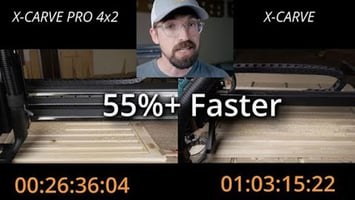If you're in the market for a CNC machine, you've probably come across the X-Carve and the X-Carve...
Virtual Visualization: Using Software to Collaborate with Clients on Cabinet Designs

In the realm of cabinetmaking, the dance between client and craftsman has traditionally been a meticulous one. The client envisions, the craftsman sketches, and the two come together over drafts and redrafts to finalize a design. Enter the digital age, and we find that software is not just enhancing this process but revolutionizing it.
Client's Vision to Virtual Reality
The beauty of using software in the design phase is the ability to transform abstract ideas into tangible visuals. A client might have a vague concept, perhaps inspired by a design they saw online or in a magazine. With advanced cabinet design software, these inspirations can be transformed into detailed, 3D visualizations within minutes. No longer does one have to rely solely on imagination; the software paints a clear, vivid picture.
Real-time Revisions and Refinements
One of the primary challenges in the design process is the back-and-forth nature of revisions. With virtual visualization software, changes can be made in real-time. This instant edit capability not only saves time but also reduces potential misunderstandings between the cabinetmaker and the client. Adjusting colors, altering dimensions, or switching hardware becomes a matter of a few clicks.
Interactive Exploration
Some advanced software options allow clients to explore designs interactively. They can "walk" through virtual rooms, open cabinet doors, and even visualize how sunlight at different times of the day might interact with the wood's grain. This immersive experience can be invaluable in helping clients feel confident about their design choices.
A Shared Workspace
Collaborative software platforms create a shared workspace where both the client and the cabinetmaker can leave comments, annotate designs, and provide feedback. This continuous communication loop ensures that the final design truly represents a shared vision.
In Conclusion
The integration of software into the cabinet design process is much more than a mere nod to modernity. It's a transformative tool that bridges the gap between imagination and realization. As cabinetmakers and clients alike continue to embrace these digital tools, we can only expect the dance of design to become even more harmonious.



